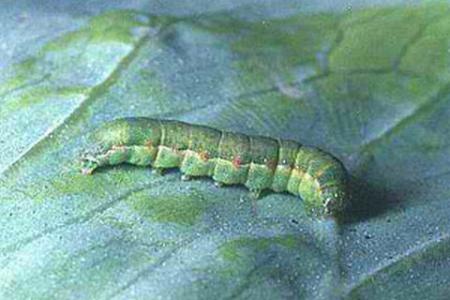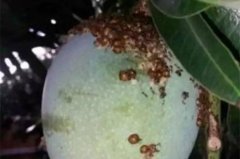Characteristics of beet armyworm: what are the larvae and adults of Spodoptera exigua
Beet armyworm is a pest, we know it, but do you know its ecological habits and morphology? Let's take a look.

Ecological habits: the adults of beet armyworm lie dormant during the day and go out at night, live on the back of leaves or in the dark during the day, and begin to move and mate after sunset. The eggs began to lay eggs 1-4 days after mating, and the oviposition period lasted 1-10 days. The number of eggs laid by each female was 205-508, with an average of 300 eggs. The egg mass is irregular, often 30-80 grains in a pile, and covered with its body hair, which is produced on the back of the leaves of the plant. The egg period is 2-6 days. The larvae have the 5th instar, and they often hide in shady places such as the ground or the soil surface during the day, and they are active and fed at night, and the larvae are self-mutilating, especially in spring and autumn, especially in drought. The larval stage is 10 ~ 56 days, and the mature larvae fall to the ground and pupate in the soil or in the fallen leaves or sundries on the soil surface. The prepupal stage is 1-2 days, and the pupal stage is 5-16 days. This worm can produce more than ten generations a year.
Shape:
Eggs: yellowish, round, with radial ridges, about 0.5-0.6 mm in diameter.
Larvae: the body color is varied, yellowish green or dark brown, sometimes yellowish white, the topline is obvious, the subtopline is white, and the body length is about 35 mm to 40 mm.
Pupa: reddish brown, light green when pupated, spindle-shaped, with two tail thorns at the end, about 11 mm in length.
Adult: there is a hair mass at the base of the back of the abdomen, with grayish brown body and wings. The lower lip is on the side of the whisker and the hair on the back of the abdomen is dark brown. The inner and outer horizontal lines of the forewings are each with two dark brown fine lines, the middle horizontal lines are also brown, and there are two dark brown dots at the end of the leading edge of the three horizontal lines; the ring and reniform lines are gray-yellow, the outline is fine black, and the center is orange-brown: the light color of the sub-perimeter is not obvious, the halo is slightly dark, and the outer edge is engraved with black spots. The base of the ciliate is dark, the apex is white, the hind wing is white, and the front and outer margin are slightly dark brown. The outer line is dark brown, with a body length of about 11 mm and a wingspan of about 25 mm.
- Prev

Management of Coconut Diseases and insect pests: diseases, hazards and Control methods of Coconut scale insects
What is the harm of coconut diseases and insects? How to prevent and cure it? Ecological habits: there may be 10 generations per year, and one generation takes about 33 days. Parthenogenesis is usually carried out. The mother lays eggs under the shell around the mother. The spawning period is 8 to 10 days.
- Next

Fruit and vegetable prices usually fall after the Spring Festival, and a special cold chain train is built to prevent the price of fruits and vegetables from falling.
Last year, the Taipei Agricultural Transportation and Marketing Company dropped its overall vegetable auction price by 30% due to multiple factors such as the explosion of fruits and vegetables, weak consumption, and continuous market closures. This year, it is expected to subsidize Beijing farmers to build a cold chain system to extend the shelf life of fruits and vegetables. Let's take a look. Connect the origin in series, use cold chain
Related
- A one-day flower show brings 130 million yuan in orders! Nanhai, this Phalaenopsis exhibition is amazing
- What do the flower language and meaning of Lutheran tree mean? Precautions for planting Lutheran tree
- Encounter Chaoshan Kongfu tea, not without this cup of Phoenix single clump
- The durian market in Vietnam and Thailand is flooded. The price of imported durian has plummeted by 30-40% in a month.
- Shanghai solved the problem of local vegetable supply by planting 80,000 mu of green leafy vegetables.
- Wageningen University has become the best agricultural university in the world for the seventh time in a row.
- The strongest export season of South African grapes is full of challenges, with exports to Russia falling sharply by 21%.
- Sri Lanka is on the verge of bankruptcy, "Tea for debt" Organic Agriculture Revolution aggravates the Food crisis?
- Turning waste into earthworm manure and worm manure into organic fertilizer-A new choice for auxiliary farming
- Organic rice growers shoulder the responsibility of nurturing agricultural talents! Yinchuan Sustainable Farm with Organic Life Camp

